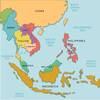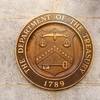Protecting Your Right to a ‘Bon Voyage’
The National Transportation Safety Board’s Earl F. Weener responds to our March 2014 MarineNews BY THE NUMBERS feature, entitled “Passenger Vessel Safety Record Defies NTSB Hit List.” The NTSB Board Member takes issue with the inference that their scrutiny of the record of passenger vessel safety is misplaced and should be better directed elsewhere. Naturally, we still think otherwise. You can find our article by visiting:
http://digitalmagazines.marinelink.com/nwm/MarineNews/201403/
Each year, the NTSB issues a Most Wanted List of safety advocacy priorities. This year, one of the top priorities is to advance passenger vessel safety. Why? Because when people step onto a ferry, sightseeing boat, or cruise ship, they have a right to a ‘bon voyage’ — literally, a “good trip” and figuratively, a “safe trip” — whether in their daily commutes or on a family cruise. However, as we have seen, too often lately, this is not always the case. One recent accident is particularly disturbing because it occurred in the very same commuter ferry market as two other ferry accidents in the past 4 years, New York’s lower Manhattan.
On January 9, 2013, the commuter ferry Seastreak Wall Street, carrying 331 passengers and crew members, struck a pier in lower Manhattan, causing 80 injuries, four of them serious. Again, this is in the wake of two prior accidents, one in which the result was not only injuries, but also deaths.
Is there a common thread here? Yes. Upon completing the investigation of this accident, along with the two prior accidents, again and again we found a lack of good safety practices — not the failure of the vessel — at the root of an accident. Risk management is a key factor in passenger vessel operations. Being aware of your potential risks and knowing how to effectively control them is important for the safety of a vessel’s passengers and crew. One of the most effective ways to manage this process is through implementation of a safety management system (SMS). When risks are effectively identified and managed through SMS practices, not only will operations improve, so will outcomes, even when there is an accident. Not surprisingly, the international marine community understands this, which is why SMS is already mandatory for international vessel operations. Noteworthy, is that now some of our domestic operations, too, are coming to understand the importance of these concepts.
In 2003, the Staten Island ferry Andrew J. Barberi struck a maintenance pier while attempting to dock at the Staten Island Ferry terminal, killing 10 and injuring many others; an eleventh victim of the accident subsequently died. The severity of the accident was partially attributable to the New York City Department of Transportation’s (DOT’s) weak safety management. The New York DOT responded by reorganizing the agency, strengthening its safety culture, and implementing an SMS. In 2010, the same ferry struck the St. George terminal. This time personnel carried out their designated emergency response procedures, established under the SMS, quickly and effectively. Few passengers were seriously injured, and none died.
In other cases, we found accidents that clearly should never have happened — again attributable in part to poor risk identification and management. In July 2008, the Block Island, a 187-foot-long US passenger and car ferry vessel carrying 294 passengers and 11 crewmembers, collided with the 140-foot-long US Coast Guard cutter Morro Bay, carrying 21 personnel, on Block Island Sound, Rhode Island. The NTSB’s investigation revealed failure to follow navigational “rules of the road” in reduced visibility, ineffective use of the radars on board both vessels, and lack of safety management systems on U.S. ferries.
In addition, the available out-of-water survival craft on board the Block Island vessel could not have accommodated the ferry’s total passenger capacity. And, like many other U.S. passenger ferries, the Block Island carried no voyage data recorder.
When passengers board a marine vessel, whether for a commute to work, a sightseeing trip around the bay, or a cruise to Alaska, they should be confident safety is being effectively managed. This means ensuring a trip proceeds underway with appropriately trained crew, well equipped and maintained vessels (including out-of-water flotation devices for every person on board and operational voyage data recorders), and adequate measures to address emergency situations.
Although accidents on passenger vessels are relatively rare, the consequences can be catastrophic. The size and capacity of passenger vessels continues to increase. The time to address these safety issues is now.
Some have criticized the NTSB’s focus on this issue, calling it an assault on an already safe industry. A recent criticism published in MarineNews states passenger vessel accidents caused “only” 17 deaths in 2010. In response, alternatively, consider that same year from the perspective of the commercial aviation industry. In 2010, commercial aviation accidents caused zero deaths in the United States – just one of a four-year span without an airline fatality. Yet, the NTSB has every intention of continuing to emphasize areas for improvement in commercial aviation. Safety requires vigilance, not complacency. In passenger vessel safety there is both room for improvement and a need for the NTSB’s continued vigilance.
The NTSB’s Most Wanted List is an opportunity for all stakeholders to engage in conversations about how we can work together to make vessels safer for passengers. Last month, the NTSB convened a 2-day forum, Cruise Ships: Examining Safety, Operations and Oversight, to review the regulatory and investigative framework under which cruise ships operate, ship design, fire protection, operations and corporate oversight of cruise ships, and more. We also explored some recent high-profile incidents. The goal of the forum was to learn more about the current state of cruise ship safety from industry stakeholders and regulators on behalf of the traveling public.
We urge publications like MarineNews and safety-minded executives throughout the passenger vessel industry to reexamine www.ntsb.gov/index.html
It is a list of safety priorities all stakeholders can support in the interest of improving safety. The NTSB Most Wanted list is available on the NTSB’s website: www.ntsb.gov
(As published in the June 2014 edition of Marine News - http://magazines.marinelink.com/Magazines/MaritimeNews)













